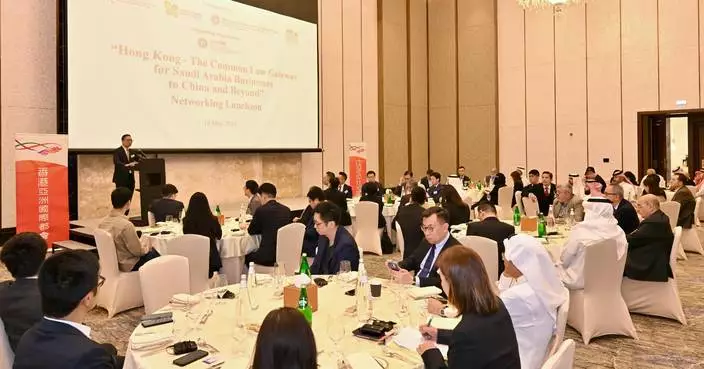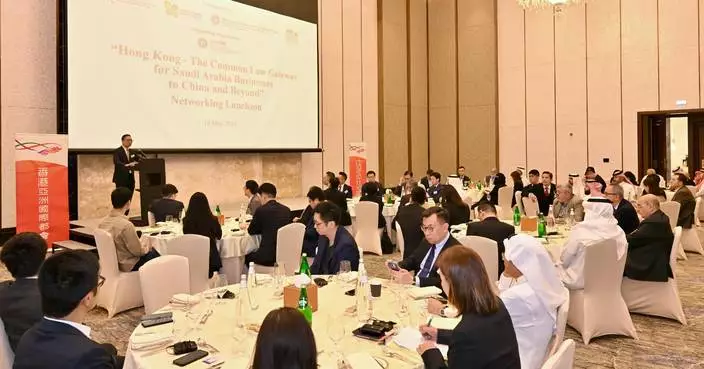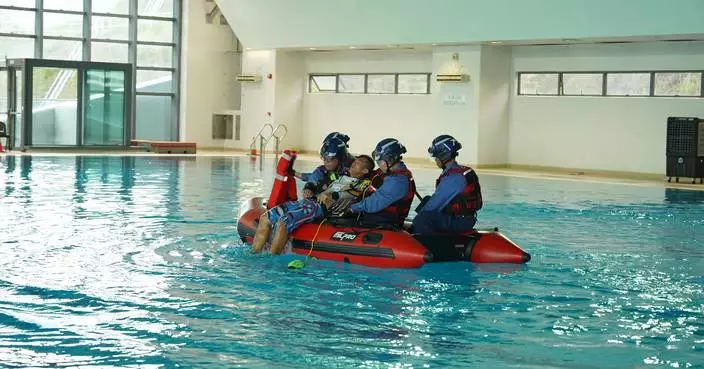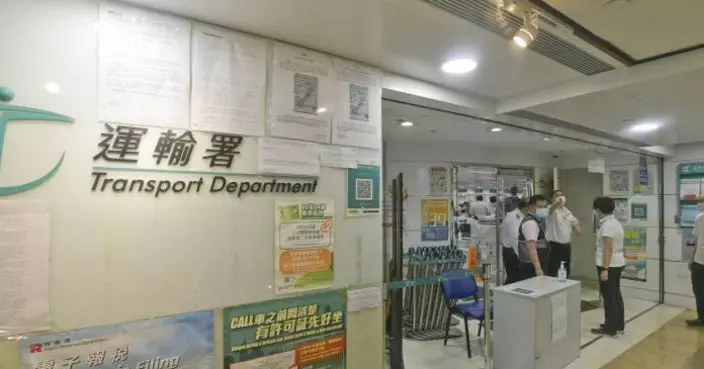Boosting success: how hong kong manufacturers thrive on the mainland
Following is a question by Dr the Hon Chow Man-kong and a written reply by the Secretary for Commerce and Economic Development, Mr Algernon Yau, in the Legislative Council today (May 8):
Question:
The Key Statistics on Business Performance and Operating Characteristics of the Industrial Sector (the Key Statistics) released regularly by the Census and Statistics Department (C&SD) include, in addition to statistics of local economic activities in manufacturing, statistics of local import and export firms engaged in sub-contract processing arrangement on the Mainland and providing manufacturing-related technical support services. It is learnt that the latter are regarded as an indirect reflection of the operating situations of Hong Kong manufacturing enterprises having set up their headquarters in Hong Kong and their factories on the Mainland. Furthermore, according to the information of the C&SD, there has been a continuous drop in the number of import and export firms with manufacturing-related activities, the number of persons engaged and the sales revenue in recent years, and the decrease in those numbers has accelerated since 2020 (i.e. since the outbreak of the epidemic). In this connection, will the Government inform this Council:
(1) given that the C&SD did not release the full statistical report of the Key Statistics at the end of last year as it had done in previous years, and has classified the said report as a "discontinued product", of the reasons for that;
(2) as it is learnt that Hong Kong businesses having their headquarters in Hong Kong and producing on the Mainland have created an enormous demand for support services in finance, transport and logistics and other production service industries in Hong Kong, whether it has assessed the impact of the continuous decline in the number of relevant enterprises on the development of local production service industries (e.g. re-export trade via Hong Kong, financing and other support services for industries and commerce); if so, of the details; if not, the reasons for that;
(3) given that the Financial Secretary has proposed in this year's Budget the development of Hong Kong into a multinational supply chain management centre to attract Mainland manufacturing enterprises seeking to "go global" to set up offices in Hong Kong to serve as headquarters for managing their offshore trading, and there are views that most Hong Kong manufacturing enterprises, which are a key stakeholder in bolstering Hong Kong's status as a multinational supply chain management centre, have all along chosen Hong Kong as their supply chain management centre, whether the government departments concerned have, in view of the aforesaid statistical changes, gained an understanding from the relevant sectors (including the major chambers of commerce) their latest development and how they upgrade and transform themselves; if so, of the details; if not, the reasons for that;
(4) whether the New Industrialisation Development Office established in February this year will join hands with government departments such as the Trade and Industry Department, the C&SD and the Special Administrative Region Government's economic and trade offices on the Mainland to conduct a more thorough survey on the development of Hong Kong manufacturing enterprises on the Mainland (or trading firms defined by the C&SD as being engaged in manufacturing-related activities) and provide targeted support; if so, of the details; if not, the reasons for that; and
(5) given that the Financial Secretary announced in the 2022-2023 Budget that a total funding of $135 million would be allocated to the Hong Kong Trade Development Council in the three years that followed for the introduction of the Support Scheme for Pursuing Development in the Mainland, but there are views that the effectiveness of such measure has room for improvement, whether the Government will consider, by drawing reference from the initiative proposed in last year's Policy Address of earmarking $30 million for clansmen associations, providing regular or project-based subsidies for chambers of commerce and groups of Hong Kong people on the Mainland, so as to assist Hong Kong manufacturing businesses, in particular, in developing the Mainland domestic sales market; if so, of the details; if not, the reasons for that?
Reply:
President,
In consultation with the Financial Services and the Treasury Bureau, the Innovation, Technology and Industry Bureau (ITIB) and the Constitutional and Mainland Affairs Bureau, the consolidated reply to the different parts of the question is as follows:
(1) Statistical reports regularly published by the Census and Statistics Department (C&SD) in the past were in traditional desktop publishing format (PDF format). In order to enhance users' reading experience, starting from April 2023, these statistical reports are published by the C&SD in the new "web report" format, which provides more interactive features and is more convenient for users to read directly using computers or mobile devices. The detailed results of the 2022 Annual Survey of Economic Activities in respect of the industrial sector were already published in "web report" format on December 29, 2023, in the report "Key Statistics on Business Performance and Operating Characteristics of the Industrial Sector in 2022" (www.censtatd.gov.hk/en/wbr.html?ecode=B10800122022AN22&scode=310). Key statistics relating to manufacturing firms as well as import and export firms engaged in sub-contract processing arrangement and providing manufacturing-related technical support services are presented in Table 610-72013 of the report under Section 7.
(2) and (4) Government bureaux and departments maintain liaison with various trade and industrial organisations and, through different consultation channels, understand the development situations and needs of the relevant sectors, with a view to formulating appropriate policies and support measures. Apart from liaising and exchanging views with various major chambers of commerce in Hong Kong from time to time, the Commerce and Economic Development Bureau (CEDB) has also established the Trade and Industry Advisory Board and the Small and Medium Enterprises Committee comprising, among other members, representatives from a number of business and professional services sectors and small and medium enterprises (SMEs), for tapping the trades' views. Other Government bureaux and departments also keep abreast of the operation and actual needs of the relevant sectors through different channels, including the advisory bodies under their purviews. The C&SD also regularly conducts surveys of economic activities to collect statistical data on the business performance and operation of Hong Kong enterprises (including those with business operations on the Mainland) of various sectors (including the manufacturing industry). The ITIB will continue to maintain close liaison with the C&SD and duly consider if there is any need to conduct a more comprehensive study.
(3) and (5) In line with the trend of Mainland manufacturing enterprises extending their production supply chains abroad, the Financial Secretary has proposed in the 2024-25 Budget to develop Hong Kong into a multinational supply chain management centre. In that regard, as a premier financial and commercial centre in the region, Hong Kong has the capacity to offer full-fledged and comprehensive professional support services (e.g. consulting services, trade financing and corporate training) to meet the overseas business needs of those Mainland enterprises wishing to "go abroad".
The CEDB is co-ordinating and working together with "Team Hong Kong" organisations to study the relevant details, including the provision of one-stop services for enterprises. Invest Hong Kong will also support the work and step up efforts in attracting Mainland manufacturing enterprises to set up offices in Hong Kong to serve as headquarters for managing their offshore trading, and continue to organise and sponsor a series of investment promotion activities to provide them with the latest information on Hong Kong's business environment and proactively promote Hong Kong's distinctive advantages of enjoying strong support of the Motherland and our close connections to the world under "one country, two systems".
As regards understanding the latest development situation of the relevant sectors for promoting upgrading and transformation and providing targeted support, the measures being implemented include:
To understand the needs of Hong Kong enterprises on the Mainland, at the early implementation stage of the Support Scheme for Pursuing Development in the Mainland, the HKTDC conducted studies through surveys and seminars, and received more than 1 700 replies from these enterprises. The HKTDC, having regard to the findings and in partnership with relevant Mainland organisations, launched a series of activities and services that could cater for enterprises' needs. From the commencement of the Support Scheme for Pursuing Development in the Mainland in April 2022 to end March 2024, the HKTDC had organised more than 290 events in around 50 Mainland cities with the participation of more than 22 000 representatives of Hong Kong enterprises and professionals. The events include introduction and briefing of policies, online and offline seminars, business forums, visits to work sites and enterprises and thematic salons, covering different sectors such as finance, innovation and technology, professional services, biomedicine, catering, environmental protection and cultural and creative industries. In organising these activities, the HKTDC had collaborated with more than 270 relevant organisations including Mainland-based chambers of Hong Kong businesses, economic and trade associations, professionals' groups, young entrepreneur associations, industry associations as well as relevant Mainland governmental and economic and trade bodies.
The Support Scheme for Pursuing Development in the Mainland is well-received by Hong Kong enterprises and relevant organisations on the Mainland, and has helped deepen our trades' understanding of the Mainland's policies and market developments, as well as broaden their Mainland network so as to extend their business from major cities to neighbouring provinces or cities. The Government does not plan to change the current operation and mode of funding of the Support Scheme for Pursuing Development in the Mainland.
Government bureaux and departments will continue to closely monitor the latest developments of different sectors, and review the effectiveness of their work in due course for enhancing their policies and support measures.

Source: AI-generated images









